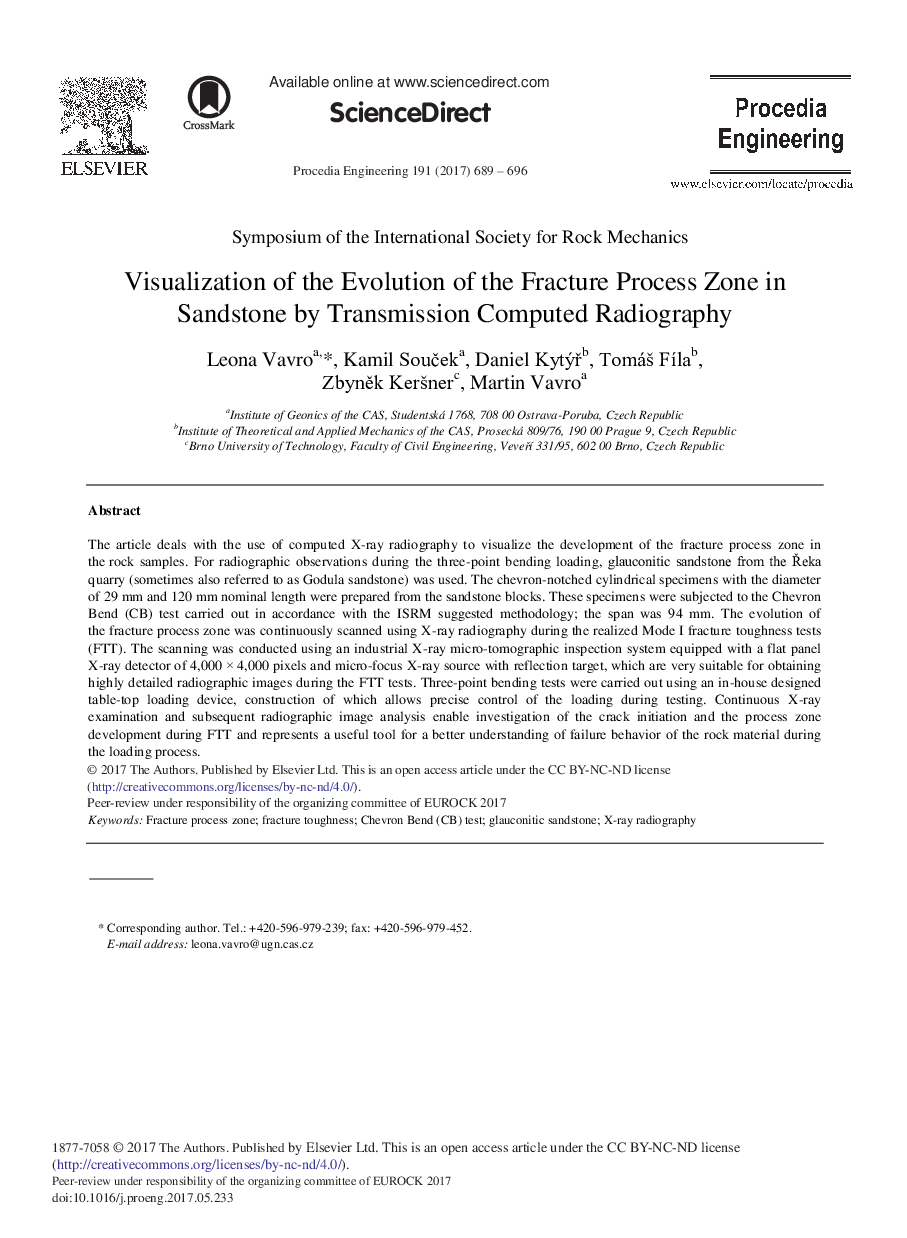| Article ID | Journal | Published Year | Pages | File Type |
|---|---|---|---|---|
| 5027560 | Procedia Engineering | 2017 | 8 Pages |
The article deals with the use of computed X-ray radiography to visualize the development of the fracture process zone in the rock samples. For radiographic observations during the three-point bending loading, glauconitic sandstone from the Åeka quarry (sometimes also referred to as Godula sandstone) was used. The chevron-notched cylindrical specimens with the diameter of 29 mm and 120Â mm nominal length were prepared from the sandstone blocks. These specimens were subjected to the Chevron Bend (CB) test carried out in accordance with the ISRM suggested methodology; the span was 94Â mm. The evolution of the fracture process zone was continuously scanned using X-ray radiography during the realized Mode I fracture toughness tests (FTT). The scanning was conducted using an industrial X-ray micro-tomographic inspection system equipped with a flat panel X-ray detector of 4,000 Ã 4,000 pixels and micro-focus X-ray source with reflection target, which are very suitable for obtaining highly detailed radiographic images during the FTT tests. Three-point bending tests were carried out using an in-house designed table-top loading device, construction of which allows precise control of the loading during testing. Continuous X-ray examination and subsequent radiographic image analysis enable investigation of the crack initiation and the process zone development during FTT and represents a useful tool for a better understanding of failure behavior of the rock material during the loading process.
